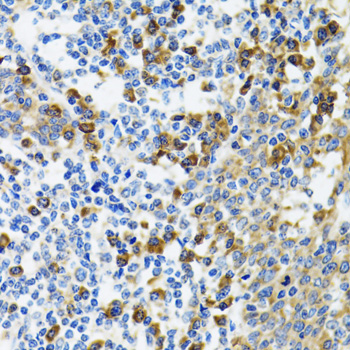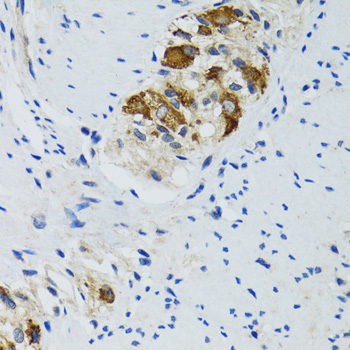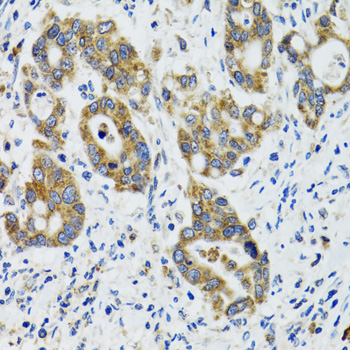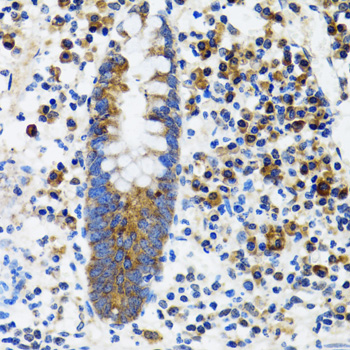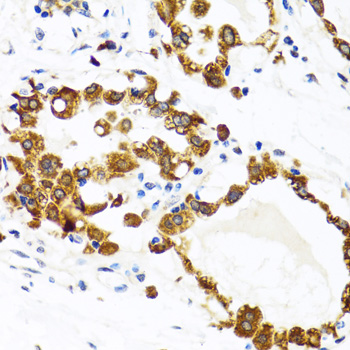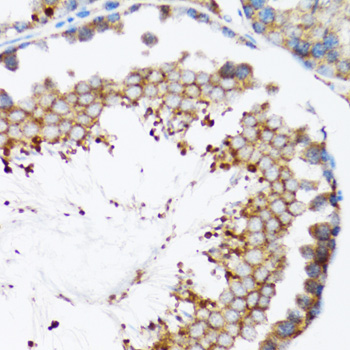HYOU1 Polyclonal Antibody
For reference only. Please follow the manual included in your kit for instructions.
Catalog Number
Product Name
HYOU1 Polyclonal Antibody
Catalog Number
RD83952A
Purification Method
Affinity purification
Isotype
IgG
Host
Rabbit
Background
The protein encoded by this gene belongs to the heat shock protein 70 family. This gene uses alternative transcription start sites. A cis-acting segment found in the 5' UTR is involved in stress-dependent induction, resulting in the accumulation of this protein in the endoplasmic reticulum (ER) under hypoxic conditions. The protein encoded by this gene is thought to play an important role in protein folding and secretion in the ER. Since suppression of the protein is associated with accelerated apoptosis, it is also suggested to have an important cytoprotective role in hypoxia-induced cellular perturbation. This protein has been shown to be up-regulated in tumors, especially in breast tumors, and thus it is associated with tumor invasiveness. This gene also has an alternative translation initiation site, resulting in a protein that lacks the N-terminal signal peptide. This signal peptide-lacking protein, which is only 3 amino acids shorter than the mature protein in the ER, is thought to have a housekeeping function in the cytosol. In rat, this protein localizes to both the ER by a carboxy-terminal peptide sequence and to mitochondria by an amino-terminal targeting signal. Alternative splicing results in multiple transcript variants.
Immunogen Information
Immunogen
Recombinant fusion protein of human HYOU1 (NP_001124463.1).
Gene ID
10525
Swissprot
Q9Y4L1
Synonyms
HYOU1GRP-170Grp170HSP12AORP-150ORP150
Applications
Reactivity
Human,Mouse
Tested Applications
IHC
Conjugation
Unconjugated
Dilution
IHC 1:50-1:200
Concentration
1 mg/mL
Storage Buffer
PBS with 0.02% sodium azide, 50% glycerol, pH7.3
Storage Instructions
Store at -20°C. Avoid freeze / thaw cycles.
